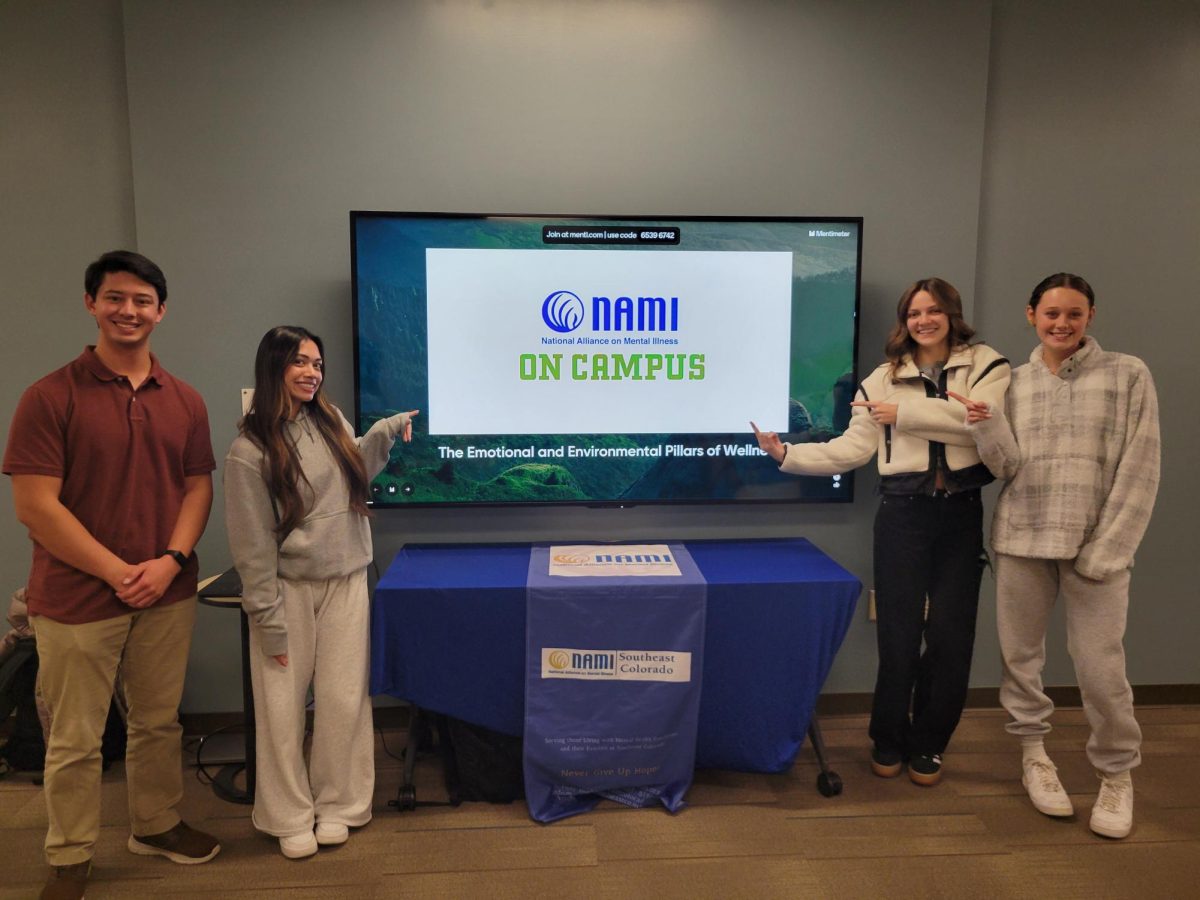
Katie England
The more students Colorado State University-Pueblo attracts through its new enrollment strategies, the better it is for its budget. But not all students bring in the same amount of money.
“We are heavily dependent on enrollment. But we have to unpack enrollment by what type. Are the students international? Are they graduate or undergraduate? It makes a difference,” said Marty Hanifin, vice president for finance and administration.
An undergraduate, in-state student taking 12 credit hours per semester brings approximately $3,120 to the university through base tuition. However, a non-resident, undergraduate student brings in $7,356 in base tuition per semester, more than double the in-state undergrad. Graduate student tuition rates are even higher. Fee rates are the same for both categories.
Approximately 100 international students are currently enrolled at CSU-Pueblo, providing extra cash for the university, though Paul Orscheln, vice president of student services and enrollment management, said there is still room for recruitment and growth in that demographic of students.
In order to grow the international recruitment, CSU-Pueblo is currently concentrating on several countries in Central and South America.
“Latin America has some exciting new enrollment opportunities for us,” Orscheln said.
One of CSU-Pueblo’s recruiters is from Venezuela, and is very proactive in recruitment there.
“Our recruiter has visited Columbia, Venezuela, Brazil, Costa Rica and Mexico,” Orscheln said. “But, she has also gone to Europe, visiting Italy and Spain.”
Another recruiter is from Germany, and visits that country at least once a year.
Another factor that determines how enrollment affects the budget is which major a student decides to take, since some majors have higher tuition rates than others.
“Some of our majors have what we call ‘differential tuition’ because their costs are higher than other majors,” Orscheln said. Because of the differential tuition, he said it is in the universities best interest to attract students in as many majors as possible.
Undergraduate majors such as engineering, business, computer information systems and nursing are all majors that charge $25 more per credit hour than CSU-Pueblo’s standard tuition rates.
Concurrent enrollment, high school students taking college classes while they are still in high school, is another area of enrollment, which CSU-Pueblo is working to strengthen. But it works differently than other categories of enrollment, because the tuition is paid through the high school.
Right now, CSU-Pueblo has approximately 20 students enrolled concurrently, though Orscheln said there is room for improvement in this category, and enrollment strategies are being worked on.
For now, the university recruits by maintaining a strong presence in Pueblo County high schools, and by prioritizing other high schools in Colorado.
Recruitment and marketing strategies involve personal recruiters visiting schools, direct mail, direct email, telephone calls, social media and media advertising, but because recruitment is expensive, the university has to prioritize where it recruits.
“We can’t be everywhere, and not every high school student is interested in CSU-Pueblo, so we have to do our research and identify the high schools and their students who we think are most interested in attending CSU-Pueblo,” Orscheln said.
Although keeping enrollment up does play a part in keeping tuition at CSU-Pueblo from going up, Orscheln said there are many other factors, which also play a role.
“We also rely on some state assistance from a couple of different categories to fund our budget. Also, we are part of the CSU System and the state department of education, so those entities also play a very important role in determining whether or not we raise tuition, or by how much,” Orscheln said.








Kelly G. • Jan 21, 2014 at 11:35 pm
This is a very well-written article that explains part of the solution moving forward in the midst of all this change… kudos
Jason Cowan • Dec 5, 2013 at 3:34 pm
Thank you for point that out. We corrected it accordingly. Our apologies.
-Jason
Christina • Dec 5, 2013 at 7:41 am
I think it interesting that this article claims “An undergraduate, in-state student taking 12 credit hours per semester brings approximately $4,894 to the university over the course of two semesters.”
But in fact I pay that amount for one semester not for two semesters. I am an undergraduate, in-state student so I am wondering if there was a mistype or if I am being overcharged.